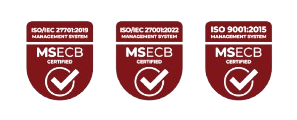According to Forbes, 74% Of Data Breaches Start With Privileged Credential Abuse with the cost of this breach being a staggering $4.88M in 2024 alone; a 10% increase from the previous year and the highest total ever, according to IBM reports. Protecting sensitive data and applications in organizations has now become critical to business continuity.
What is the Principle of Least Privilege?
The Principle of Least Privilege (PoLP) is a fundamental strategy for minimizing risk by restricting access rights for users, systems, and applications to the bare minimum necessary to perform their tasks. In simpler words, it is a security strategy that limits access to only what is necessary for users, systems, and applications to complete their tasks, reducing potential risks to your organization.
Understanding the Principle of Least Privilege
The Principle of Least Privilege operates on a simple premise: give users only the permissions they need and nothing more, nothing less, minimizing potential damage from accidental errors or malicious actions.
For instance, if a financial analyst in your organization only needs read-only access to reports, granting them write or administrative permissions exposes the system to unnecessary risks. By adhering to this simple principle, your organization reduces its vulnerability to insider threats, privilege misuse, and lateral attacks within compromised networks.
The Role of IAM in PoLP Implementation
Implementing PoLP in your organization requires robust tools for managing roles, permissions, and access workflows. This is where Identity and Access Management (iAM) solutions like the Seamfix iAM, play a pivotal role. Seamfix iAM simplifies the enforcement of PoLP by providing centralized, policy-driven access management, ensuring that access is granular, secure, and compliant.
Key Features of Seamfix iAM for PoLP
- Multi-Factor Authentication (MFA) with Biometric Technology: Seamfix iAM takes authenticating your staff a step further by integrating advanced biometric authentication, such as fingerprint recognition and facial recognition, into the MFA process. This technology not only enhances security but also provides an additional layer of protection for your staff accessing sensitive systems or data. The combination of something you know (password), something you have (device), and something you are (biometrics) ensures that even if one layer is compromised, unauthorized access is still prevented.
- Role-Based Access Control (RBAC): Seamfix iAM uses RBAC to assign permissions based on user roles, aligning access levels with job functions.Ensuring that employees can access only what they need to perform their tasks.
- Granular Permissions Management: Administrators can fine-tune permissions, limiting access to specific data and applications based on real-time requirements.
- Audit and Compliance Tools: Seamfix iAM generates detailed logs and reports, making it easy to track access, identify anomalies, and meet regulatory requirements like GDPR and HIPAA.
Benefits of Combining PoLP with Seamfix iAM
1. Reduced Attack Surface
By limiting access, Seamfix iAM minimizes potential entry points for attackers. Features like Multi-Factor Authentication (MFA) add an extra layer of security to sensitive applications.
2. Mitigation of Insider Threats
Seamfix iAM’s robust tracking tools allow administrators to monitor user activities and detect privilege misuse. Unauthorized access attempts are flagged and acted upon in real-time.
3. Simplified Compliance
Compliance mandates often require strict access controls. Seamfix iAM automates access reviews and supports role-based compliance features, streamlining adherence to standards such as SOC 2 and ISO 27001.
4. Enhanced Operational Efficiency
Features like Single Sign-On (SSO) and self-service password management reduce administrative overhead, allowing IT teams to focus on strategic initiatives rather than routine access tasks.
Best Practices for PoLP Implementation with Seamfix iAM
- Start with Minimum Access: Default all new roles to least privilege and scale up access only as required.
- Enforce Segregation of Duties (SoD): Use Seamfix iAM to separate roles that handle sensitive functions, ensuring no single user has excessive control.
- Automate Access Audits: Leverage the iAM platform’s reporting capabilities to conduct regular privilege reviews.
- Adopt Adaptive Authentication: Configure dynamic access controls that adjust based on user behavior or contextual factors, such as location or device.
By integrating The Principles of Least Privilege with tools like Seamfix iAM, organizations can achieve robust security while maintaining operational efficiency.
Want to Learn More about the Principle of Least Privilege and How Seamfix iAM helps enforce these privileges, visit seamfix.com/iam-identity-access-management
Want to see a Demo first, Click the link below to request one.









